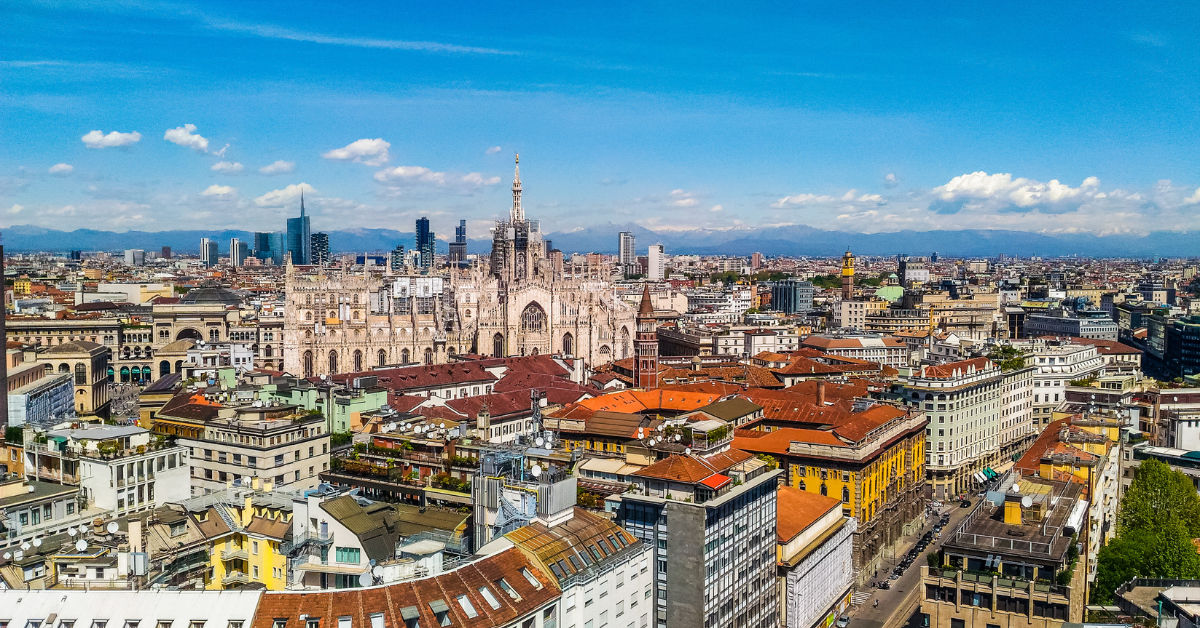Milan, one of Italy’s most influential cities, was once written in kanji as “未蘭” or “米蘭.” These spellings reflect the historical method of phonetically transcribing foreign place names into Japanese. For modern Japanese people, Milan is strongly associated with fashion, art, and refinement, while also being recognized as a hub of business and sports.
Kanji Representations: “未蘭” and “米蘭”
Milan has appeared in Japanese as “未蘭” and “米蘭.” These are examples of phonetic transcription, a method common in the late 19th and early 20th centuries. At that time, katakana spellings were not yet widespread, and newspapers and books often used kanji to represent foreign places.
| Representation | Reading | Background | Example Usage |
|---|---|---|---|
| 未蘭 | Miran | A direct phonetic rendering | Japanese publications and dictionaries |
| 米蘭 | Beiran / Meiran | Influenced by Chinese transliteration | Materials via China |
Other cities were also rendered in this way: London as “倫敦,” Paris as “巴里,” and New York as “紐育.” Such spellings helped integrate foreign culture into Japanese writing and made it more accessible to readers. Milan’s “未蘭” and “米蘭” are examples of this cultural adaptation and remain visible in older documents and maps.
Japanese Perceptions of Milan
For the Japanese, Milan is above all a symbol of refinement. The city is strongly associated with fashion and art, and its reputation extends across multiple fields.
| Type of Image | Japanese Perception |
|---|---|
| Fashion | A global center setting the world’s trends |
| Art & Architecture | Home to treasures like the Duomo and The Last Supper |
| Business | The economic heart of Italy |
| Sophistication | A luxurious, cultured atmosphere |
Among younger Japanese, Milan is often seen as a hub for cutting-edge design and lifestyle, making it a popular destination for travel and study abroad.
Milan as a Sports City
Milan is not only a city of art and fashion but also one where sports passion thrives. Football, in particular, is central to the city’s identity.
| Club | Distinctive Traits | Influence in Japan |
|---|---|---|
| AC Milan | A historic club producing global stars | Drew attention due to Japanese players’ involvement |
| Inter Milan | A fierce rival and European powerhouse | Widely covered in Japanese media |
The clash between these two teams, known as the Milan Derby, captivates fans worldwide. Their shared home, the San Siro Stadium, is considered a sacred ground of Italian football. Beyond soccer, basketball and volleyball are also popular, highlighting Milan’s dynamic sports culture.
Milan’s Appeal as a Tourist Destination
Milan is also a major tourist city, and Japanese travelers are especially drawn to its iconic landmarks.
| Landmark | Features | Why It Appeals to Japanese Visitors |
|---|---|---|
| Duomo Cathedral | A masterpiece of Gothic architecture | Its overwhelming scale and grandeur |
| La Scala | One of the world’s premier opera houses | A dream destination for music lovers |
| Santa Maria delle Grazie | Houses Leonardo’s The Last Supper | Famous UNESCO World Heritage site |
| Galleria Vittorio Emanuele II | Historic shopping arcade | Luxury shopping street |
Shopping and cuisine are also major attractions. Dishes like Milanese cutlet and saffron risotto are highly appreciated by Japanese visitors, leaving them with lasting memories.
The History and Industry of Milan
Milan has been significant since Roman times and rose to prominence in the Middle Ages as a commercial center. During the Renaissance, it became a hub of art and scholarship, later transforming through the Industrial Revolution into the economic center of Italy.
Today, Milan’s fashion and design industries dominate globally. The Salone del Mobile, Milan’s international furniture fair, attracts designers and buyers from across the world. These industries contribute not only to tourism but also make Milan a major business destination for Japanese professionals.
Conclusion
Milan’s history of being written as “未蘭” or “米蘭” reflects early cultural contact with Japan. Today, the city is defined by four major pillars: fashion, art, business, and sports.
For Japanese people, Milan is not merely a travel destination but a city that embodies aspiration and sophistication. It is at once glamorous and passionate, historical yet innovative. This multifaceted character shapes the enduring image of Milan in the Japanese imagination.






